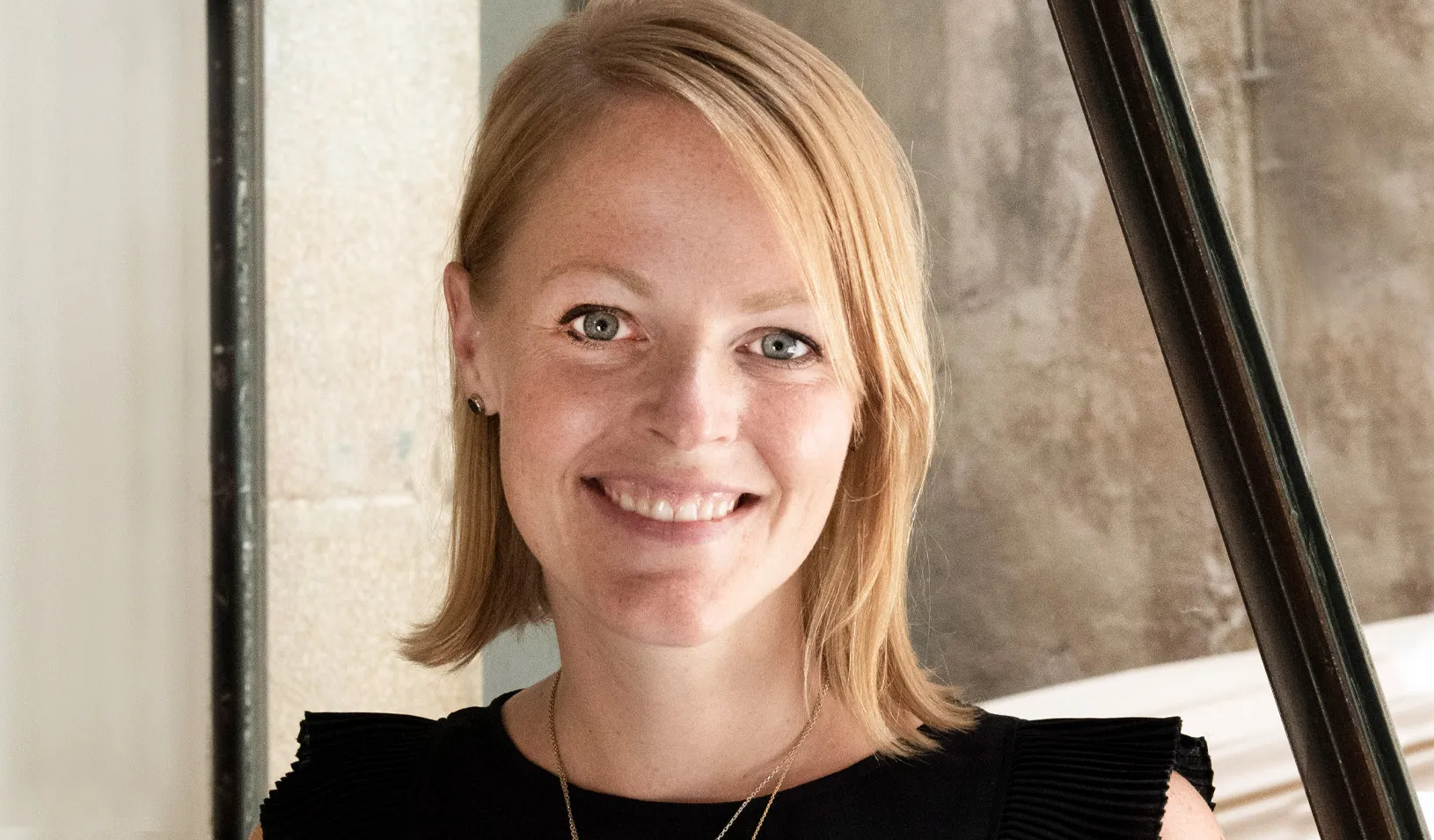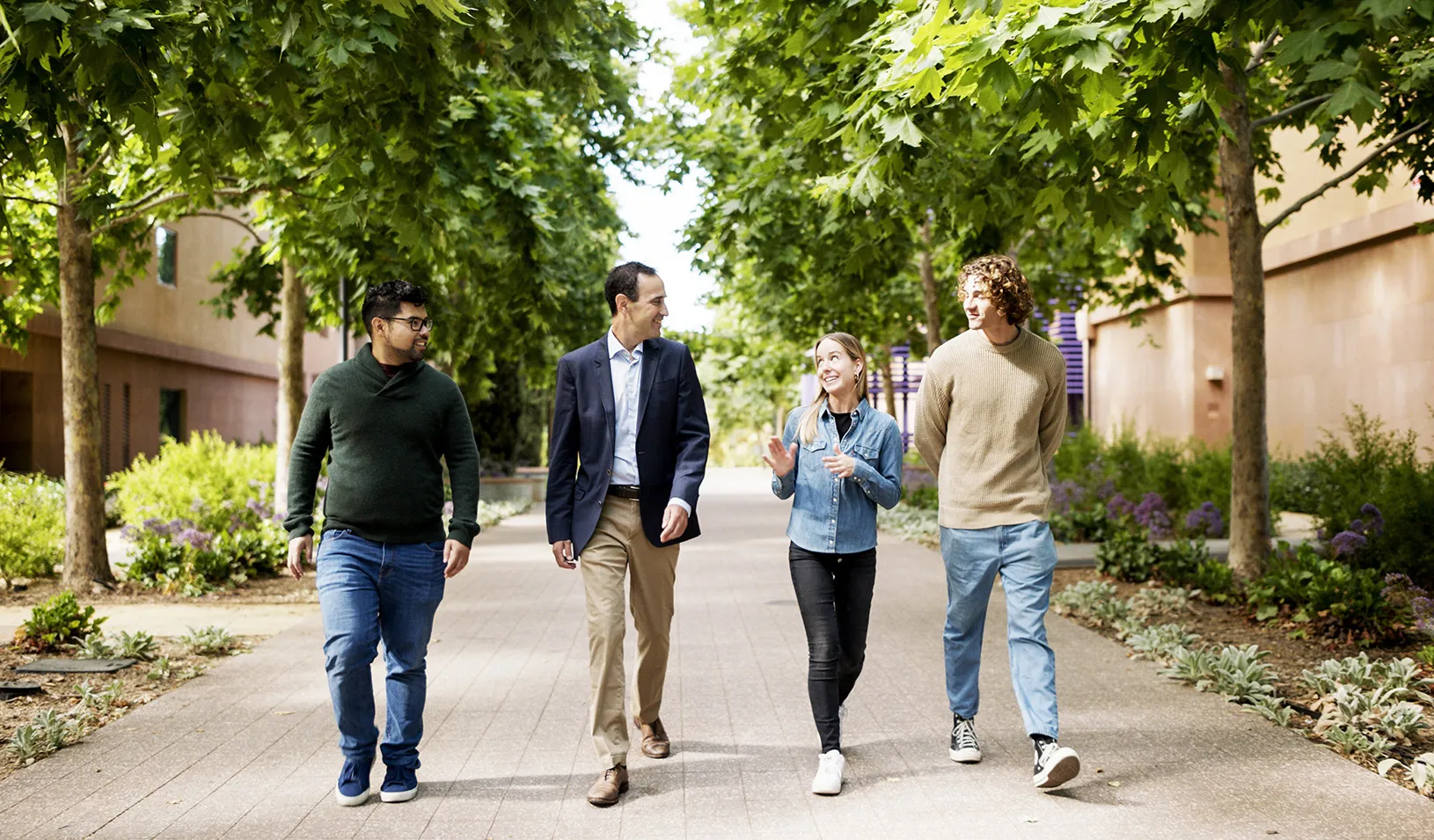Demand for Green Buildings Grows at Stanford
Stanford’s green building initiatives were outlined during a January 2008 conference on sustainability cosponsored by the Stanford GSB Alumni Association.
January 01, 2008
Stanford University is just stepping into the green building movement. But ambitious plans are underway to construct more buildings on campus that use fewer resources and don’t release as many harmful greenhouse gases. Officials are also investigating energy-saving features that could be installed in some existing campus buildings during the next few years.
Even a green dorm is being planned to serve as both a student residence and laboratory showcasing resource-efficient technologies.
Stanford’s green building initiatives were outlined during a January 2008 conference on environmental sustainability that attracted 70 graduates. The Stanford GSB Alumni Association and the university’s Woods Institute for the Environment jointly sponsored the three-day event.
“The fact that Stanford is embracing green is, in fact, a very smart risk reduction strategy,” said Gregory Kats, MBA ‘86 and managing director of Good Energies, a New York-based venture capital firm that invests heavily in clean energy ventures. “You could imagine Stanford not doing it and five years from now, when carbon is a dominant issue and other universities are leaders in green buildings, it would hurt Stanford’s brand. It’s a very smart preemptive strategy to become a leader in this area.”
So far the university’s focus on green building includes the $3.29 million Leslie Shao-Ming Sun Field Station, opened at Jasper Ridge Biological Preserve in 2002. The 9,800-square-foot station uses solar energy for heat, a photovoltaic system to generate electricity, and contains waterless, no-flush urinals — the first in Santa Clara County.
In November 2007 the university hired its first sustainability czar. Executive Director of Sustainability and Energy Management Joe Stagner is working to develop a campus-wide greenhouse gas reduction plan, with details due out this spring.
A green dorm is also in the works, and the goal is that the school’s new campus, expected to break ground later this year, will meet the highest standards for sustainability as measured by Leadership in Energy and Environmental Design (LEED).
The overall effort is being chronicled on a website started last year.
Plans are being developed to upgrade a dozen buildings that have been deemed the campus’ 12 top “energy hogs” because they have the highest energy use, said Jack Cleary, Stanford’s associate vice president for Academic Projects and Operations with the Land, Buildings, and Real Estate office. Many laboratories and the Iris and B. Gerald Cantor Center for Visual Arts are on the list. “We will identify what we need to do to improve the efficiency of these buildings, and identify costs,” Cleary said.
Stanford’s focus on designing so-called “high-performance” buildings comes as more Fortune 500 companies are developing green buildings that use less water and electricity than traditional structures while emphasizing healthier indoor air quality. Between 40 percent and 50 percent of U.S. carbon emissions are associated with buildings, another conference speaker, Gilbert Masters, told the group. And buildings also use three-fourths of all electricity the nation produces, he said. The major ways buildings suck up energy? Heating residential buildings, lighting commercial buildings, and heating water for homes, Masters said.
Bank of America is one of several Fortune 500 businesses to have opened buildings with environmental-conscious features designed to save energy, cut waste, and reduce pollution, said Kats, of Green Energies. One of the features in the bank’s $1 billion high-rise in New York City is a system to capture and reuse all rainwater and wastewater, which the company says saves millions of gallons of water annually.
In Chicago, Kats helped design a green affordable housing development containing 63 efficiency apartments in a refurbished YMCA. The housing development in the city’s Washington Park community is about 50 percent more energy efficient than a conventionally designed building, said Kats.
Companies and other groups are incorporating sustainable features into their buildings, Kats said, because “it’s really a statement of who they are, of their values to themselves, their employees, their future employees, and their stockholders.”
There are also economic benefits.
Insurance companies, including California’s Fireman’s Fund Insurance Company, have lowered premiums for green-certified buildings. New Resource Bank of San Francisco charges green developments lower interest rates, said Kats, who is also a founder of the year-old bank. “Their energy and water bills are less,” said Kats of high-performance buildings, which some insurance industry officials say leaves owners with more disposable income to pay their loans. Also, “high performance buildings are better built and have lower costs and lower risks associated with them, so we’re going to adjust our premiums and offerings to recognize that.”
Between them, Duke and Emory universities have 30 green buildings underway, added Kats. “Parents like it because it meets their operating costs; kids like it because it’s cool.”
Stanford’s “Green Dorm” is still in the planning stages, and could have features including low-flow showers, solar-heated water, and photovoltaic electricity, said Allan Daly, a principal at Taylor Engineering in Alameda and a lecturer in Stanford’s School of Engineering. Still, he said, “We expect that the building won’t ever be zero energy. When we need it, we’re going draw energy from the grid.” And, he said, dorm residents will have to contribute toward some of the savings by turning off unused computers, for example, or even hanging laundry to dry.
Several alums working in the real estate or hotel development industries came to the environmental sustainability conference specifically to hear about green building initiatives and new technologies being used.
Janis Cenedella, division manager at S.D. Deacon Corp., an Irvine-based general contractor, said she was eager to find out whether the panelists knew about a new kind of paver used to make walkways that uses pressure created from pedestrians’ weight and footsteps to generate electricity.
“So many developers want to go green, but don’t understand what’s available,” said Cenedella, MS ‘81, in civil engineering. “My hope is to come here and learn about things that are new and exciting that will filter down to the Home Depot crowd.”
By Michele Chandler
For media inquiries, visit the Newsroom.
Explore More
Erin Nixon Joins Stanford GSB as Assistant Dean of Admissions

Nia Rose Froome, MBA ’23: Making Local, Fresh Food Available for All

New Research Fund Promotes Responsible Leadership for the Next Century
